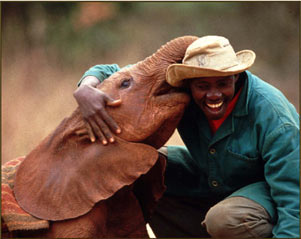 flavor than the store-bought stuff in the dead of winter.
flavor than the store-bought stuff in the dead of winter. My favorite pesto recipe comes from the original Moosewood Cookbook by Molly Katzen. Her addition of butter and parsley adds a nice mellow finish. You can add this to a dish of hot pasta, or mix a spoonful into mayonnaise for a terrific sandwich spread. Another favorite way at our house is to spread pesto on pizza dough, sprinkle with shredded mozzarella, and top with sauteed spinach, diced tomatoes, black olives, and feta. Bake at 400 degrees for 15 minutes. (We call it the Popeye Special.) Pesto is so simple to make...
Pesto
Ingredients
3 cups packed fresh basil leaves (stems removed)
2 large cloves fresh garlic
1/2 cup pine nuts or walnuts
3/4 cup packed fresh parsley (stems removed)
3/4 cup freshly grated parmesan cheese
1/2 cup olive oil
1/4 cup melted butter
Salt to taste
Instructions
Combine everything in a food processor on low, then medium speed. Thoroughly work into a smooth paste. Toss with hot drained pasta. Refrigerate leftover pesto.
I always say that once you've hauled the food processor from the bottom shelf of the pantry, you might as well whip up some hummus. This high-protein spread goes great on crackers or a baguette slice, especially when topped with bruschetta (the recipe for bruschetta follows.) It's a filling summer appetizer you can eat outside on the deck. This hummus recipe is also from the Moosewood Cookbook, revised edition.
Hummus
Ingredients
2-3 medium garlic cloves, sliced
a large handful of parsley
2 healthy scallions, in 1-inch pieces
3 cups cooked chick peas (2 15.5 oz cans, rinsed and well-drained)
6 T tahini
6 T fresh lemon juice
3/4 to 1 T salt (to taste)
optional: cayenne and a little cumin, to taste
Instructions
1. Place garlic, parsley, and scallions in a food processor and mince.
2. Add chick peas, tahini, lemon juice, and salt, and puree to a thick paste
3. Season to taste, if desired, with cayenne and cumin (and correct the salt, if necessary. Transfer to a tightly-lidded container and chill.
Bruschetta
Ingredients
(This recipe calls for plum tomatoes, but I also like to use grape tomatoes for their sharp, crisp flavor.)
8 roma (plum) tomatoes, diced
1/3 cup chopped fresh basil
1 clove garlic, minced
1 tablespoon balsamic vinegar
1 teaspoon olive oil
1/4 teaspoon kosher salt
1/4 teaspoon freshly ground black pepper
1 loaf French bread, toasted and sliced
Instructions
In a bowl, toss together the tomatoes, basil, and garlic. Mix in the balsamic vinegar, olive oil, kosher salt, and pepper. Serve on toasted bread. (Great if you put a dollop of hummus first, followed by the bruschetta!)
Marna Ashburn Krajeski, Author
http://www.TheHangingIndent.com
Amusing malapropisms and outrageous abuses of the English language
http://www.HouseholdBaggage.com
HOUSEHOLD BAGGAGE: The Moving Life of a Military Wife
HOUSEHOLD BAGGAGE HANDLERS: 56 Stories from the Hearts and Lives of Military Wives
http://www.GreatGetTogethers.com
Party Planning Notebooks for all occasions
 Most of us have seen elephants, on TV or in zoos (or in the wild, if we’ve been lucky enough), but can you pass the GREAT BIG ELEPHANT QUIZ? See if you can answer the following 10 questions:
Most of us have seen elephants, on TV or in zoos (or in the wild, if we’ve been lucky enough), but can you pass the GREAT BIG ELEPHANT QUIZ? See if you can answer the following 10 questions:











 , the dodo, and the carolina parakeet (Audobon drawing from
, the dodo, and the carolina parakeet (Audobon drawing from 







